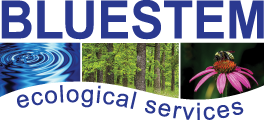There’s no such thing as a no-maintenance landscape. As long as a living thing takes in nutrients and grows, there are some responsibilities required. So, while native prairies and sustainable landscapes call for less frequent maintenance than a traditional landscape — which requires weekly mowing and weeding — you can’t just plant-it-and-forget-it.
First, it’s important to understand the difference between a sustainable and native prairie landscape. We talked about that in detail here, but to sum it up, your sustainable landscape is created with a design intent and installed using plugs or plant stock. Sustainable landscapes essentially require the same level of maintenance you’d give to a perennial garden.
A native prairie is planted from seeds or plugs. The growth of grasses and forbs is somewhat random, and the purpose of the native prairie includes managing stormwater, improving soil quality, and returning beneficial plant, insects and animals to the environment. There is less annual maintenance required for native prairies, but certainly seasonal to-do lists to keep growth in check and prevent invasive species like thistle.
If you choose to install a sustainable landscape or native prairie on your property, you’re certainly taking a lower-maintenance approach to landscaping while providing the environment with measurable ecological benefits. But, there is still a bit of work to do during the year.
Here are maintenance activities you can plan on for both types of landscapes to keep them growing strong for the long-term.
Sustainable Landscape Maintenance
Sustainable landscapes include native plants that are relatively drought-tolerant, minimizing the need for irrigation, unless extreme and prolonged heat is stressing plants. In that case, watering is important to feed plants so they can withstand hot, dry bouts in mid-summer.
But the purpose of a sustainable landscape is to create a design using plants that require fewer “inputs” than traditional landscapes, which are mostly grass and require weekly mowing, fertilizing, edging and annual aeration and (sometimes) overseeding.
Compared to a traditional landscape, a sustainable landscape requires much less ongoing maintenance. You can compare it to caring for a perennial garden. You need to preserve the design intent, so certain maintenance activities are necessary to accomplish this. For example, sustainable landscapes need to be weeded to keep invasive species from taking over. And, some native plants can reseed and spread, so weeding also can include removing natives that crop up in undesired locations.
Native Prairie Landscape Maintenance
The maintenance requirements for native prairies depend on whether the landscape is newly planted or established, which generally takes about three years. For new native prairies, mowing is necessary twice annually and grasses are cut back to 6 to 8 inches. This shorter height prevents weedy species from moving in while plants are still establishing.
Mowing is also important in early stages of native prairie development because if you let grass grow without a cut, it will shade out germinating seeds and prevent them from getting necessary sunlight to grow.
Well-established native prairies may never need to be mowed, or you might choose to mow them once a season.
In new and established native prairies, some weeding is essential to remove invasive species such as sweet clover, ragweed, canary grass, thistles and teasel. These invasive species can quickly take hold of a native prairie and choke out desired species. The use of herbicides may be necessary to control aggressive growth.
Plan To Maintain Native Prairies And Sustainable Landscapes
Go in with the mindset that sustainable landscapes and native prairies are an alternative to traditional properties with lots of grass, but they still require TLC. However, you will reduce the frequency and level of maintenance required on your commercial property if you choose to plant a prairie or implement a sustainable design.
Let’s talk more about how to properly care for your grounds so your property can fully realize the benefits that native prairies and sustainable landscapes offer.
Call Bluestem any time at 815.568.2927.
